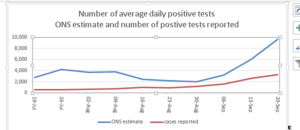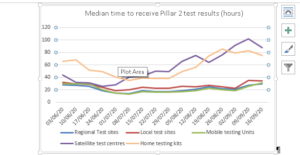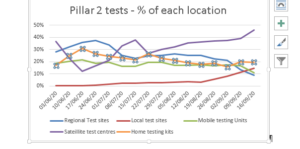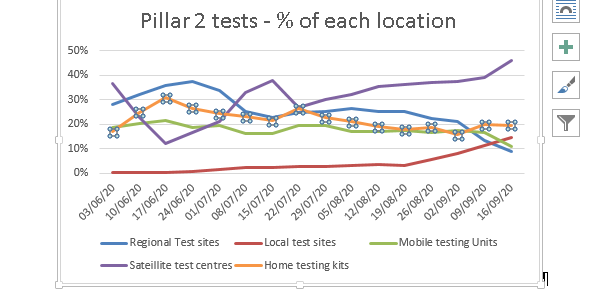1 October 2020
Lies, Damned Lies and Coronavirus
How many positive cases are there?
by David Chilvers
This week, we investigate the number of positive COVID-19 cases as estimated from two key sources:
- The number reported each day on the Governments’ Coronavirus website
- The number estimated from the ONS Weekly Infection Survey
The latter survey is what statisticians call a “gold standard” survey – a probability sample, selected to be representative of all key demographics including gender, age, region, ethnicity, social class and an urban/rural profile, contacted face to face and achieving a high response rate. The data from such surveys should be relatively free from bias and should provide good estimates of the current prevalence of COVID-19.
The number of positive cases reported each day on the Coronavirus website naturally only comes from those being tested and most of these will be individuals with symptoms. As COVID-19 can be present asymptomatically, we would expect the number of reported cases to be substantially less than the number of cases estimated from the ONS weekly survey. This is indeed the case as the chart below demonstrates:

In early July, the number of positive tests being reported was indeed substantially below the number estimated from the ONS Survey. Narrowing this gap was one of the aims of the NHS Test and Trace system, using contact tracing to find individuals that had been in contact with infected individuals and encouraging them to self-isolate – and have a test if symptoms developed.
During August, the number of positive tests reported remained at a fairly low level and the gap between the number reported and the number estimated by ONS began to narrow considerably; you could argue at this point that the Test and Trace system was starting to meet at least one of its objectives.
However, as we demonstrated last week, during August the demand for tests increased substantially, whilst the testing capacity did not. This led to problems with people not being able to have tests undertaken and, as a result, delays in their details being passed to Test and Trace if their test was positive. In consequence, the performance of the Test and Trace system deteriorated. Both this and the problems in accessing tests have led to the gap between the numbers being reported with positive results and the numbers estimated by ONS widening since early September. Test and Trace is now again missing large numbers of individuals with COVID-19.
The deterioration in the performance of Test and Trace is confirmed by its own statistics – it is taking a lot longer for test results to be received and for those with a negative result to be able to stop self-isolating. The longer it takes for tests to be processed, the more time these individuals are self-isolating.

This process is exacerbated by the increased use of testing routes with the longest times taken to process tests. An increasing proportion of tests are being undertaken at satellite test centres and this is the category with the longest turnaround time. A decreasing proportion of tests are being undertaken at Regional Test Centres and Mobile Testing Units and these are the categories with the shortest turnaround times.

We can see from this analysis that the problems with the Test and Trace system are not only impacting upon the individuals who are waiting much longer for their results, but that the number of undetected cases of COVID-19 is rapidly increasing. A system that was meant to bring this under control, and indeed appeared to be starting to do so in early August, is now spiralling out of control. As the number of positive test results continues to increase, we would expect this situation to deteriorate even further over the next few weeks.
This article is one of a series, find last week’s article “Testing Data Update” here.


